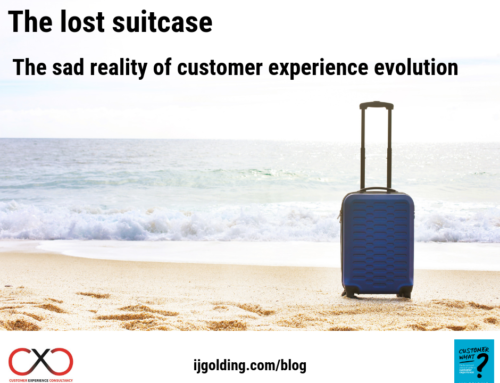
20 years ago, you could walk over London Bridge – make that any bridge in the UK for that matter – and be pretty sure that almost everyone traversing the bridge with you would be wearing something from Marks & Spencer (M&S). The things they would be wearing would very likely be pants (underwear for our US friends) and socks, although many of the men would be wearing an M&S suit, shirt or tie. Please do not get me wrong – I do not spend my time gawping at people and imagining what they are wearing underneath their overcoats – it is just (or was) a fact! The stalwart of the British high street was as common in the lives of men and women all over the UK, as the GE lightbulb is all over the world.
Today, M&S reported a 9.7% fall in profits – this is what the BBC have posted:
“Marks and Spencer, the UK’s biggest clothing retailer, has posted pre-tax profits of £290m for the six months to the end of September, down 9.7% from the same period last year.
Group sales were up 0.9% to £4.7bn, with much of the growth coming from the food side of the business.
Food sales were up 3.4%, or 1.1% on a like-for-like basis, which strips out the effect of new stores.
Clothing and homeware like-for-like sales, were down 4.3%, M&S said“
So what exactly is going on at M&S? Can they blame everything on the current economic climate? Is there anything wrong at all? This blog looks at my view (and it is only my opinion) of the situation.

Going back 20 years, M&S were seen in the same light as John Lewis on the high street. Great products, great service and extremely trustworthy. They were predominantly a clothing retailer with a smaller focus on high quality food – it was always a special treat to get your food from M&S. So what happened? In my view, M&S became complacent – they took their customer for granted. There was almost the perception that the M&S management team sat around their board table, all patting themselves on the back, congratulating each other on how wonderful they were.
As a result of their complacency, M&S did not change. It did not evolve its proposition for years – until it was too late to avert the damage. Ten years ago, M&S started to decline – nothing dramatic, but slowly people stopped coming. As the business continued to invest in its food offering, there was little focus (or so it seemed) on its core non food proposition. M&S stores 10 years ago still looked like they did ten years earlier. They had become stagnant – the experience was not evolving with the climate around it. Online retailers were starting their charge, whilst M&S trundled on doing the same thing it had always done.
M&S did appear to recognise this. They started to introduce new clothing ranges – Signature and Per Una to name two – ranges of clothing that maintained the excellent quality that M&S had always been known for. However, it felt as though the inability to move with the times meant that M&S had started to lose a generation of consumers. Today, as M&S continues its decline, my key question is – what is M&S?

Is M&S a bank? Is M&S a supermarket? Is M&S a clothing retailer? The answer is yes to all of them – but what is the collective name for a company that has many specialities, but is not necessarily great at doing them all as one? M&S has separate business units, that all have M&S in the title – but if someone asks you what is M&S and who is M&S for, what would your answer be?
I have not purchased anything from M&S’s core clothing business for well over a year now. My last purchase was a suit – a very nice one as well. In the last five years, I have been in an M&S on maybe 5 occasions. Twenty years ago, I went in to M&S every couple of months – to buy underwear, casual clothes and work clothes. My frequency of visit has changed as I am no longer sure that M&S is designed for me. Every time I walk past an M&S, the average age of customer entering and leaving looks to be in my parents age range. Looking through the windows, I can understand why. I am told that the quality is still excellent. I am told that the ranges are great – but if I perceive the store to be for the maturer customer, it is unlikely that I personally am ever going to know.
Whilst I do not think the clothes are for me, the food definitely is – the quality of M&S’s food offering is as good as it ever was. It is still a treat to do an M&S food shop – how can M&S make it feel like a treat to do a clothes shop? What M&S needs to do (in my opinion) is two things:
- Clarify their proposition – what is M&S?; what is its proposition?; why would the consumer choose M&S? Until this is clear, neither the consumer, nor M&S’s staff will know. If you are unable to associate with a brand, you will not interact with it. It is critical that M&S addresses this problem and lets the consumer and staff know about it!
- Get emotional – if M&S looks at the three elements that make up an experience – it will notice where its problem is. FUNCTIONAL – their functional experience is good – M&S still has what you need and is able to fulfil what the consumer wants. ACCESSIBLE – they tick this box as well – with a good multi channel offering, M&S are able to compete with the rest of the high street. EMOTIONAL – this is the issue – the consumer has forgotten what M&S is and what makes it special. Unlike John Lewis who have maintained their emotional link to the consumer, M&S needs to re-build theirs. What do you remember about M&S? Many people will say ‘it used to be…….’ – they need to say ‘it still is……’
As the British high street continues to struggle, it desperately needs reliable trusted brands to both maintain consumer confidence AND give the consumer what it needs. M&S, like John Lewis, is a brand that we should all be proud of. t is a brand that must never take its customers for granted again. It is a brand that needs to show its customers that it cares. If it really is ‘Your M&S’, let us see it behaving like it.
Do you agree or disagree with my point of view? As always, I welcome your comments and views.






Very true! M&S has lost its way in clothing. The stores just don’t have the same ‘pull’ as most of its high street competitors. The clothes are bland and age inappropriate (for me anyway!). Last time I shopped there was for kids uniform basics, which in fairness appear to be standing the test of time, but its not enough to pull me in more than once a year.
The most depressing statement from all this is that M&S are ‘the UK’s biggest clothing retailer’…No wonder the rest of Europe looks at us as the most unfashionable and worst dressed nation! 🙂 Love your point about M&S needing to get ’emotional’ Ian. Unfortunately, M&S seems to stand for that very English notion that emotions are a bad thing and that we all need to retain a stiff upper lip. Maybe that’s why they are so popular with the older generation?
[…] In its quest for more, Tesco has lost sight of just exactly what Tesco is. In the same way that Marks & Spencer struggle to let the poor old consumer know what it is, Tesco has fallen in to the same trap. It is […]